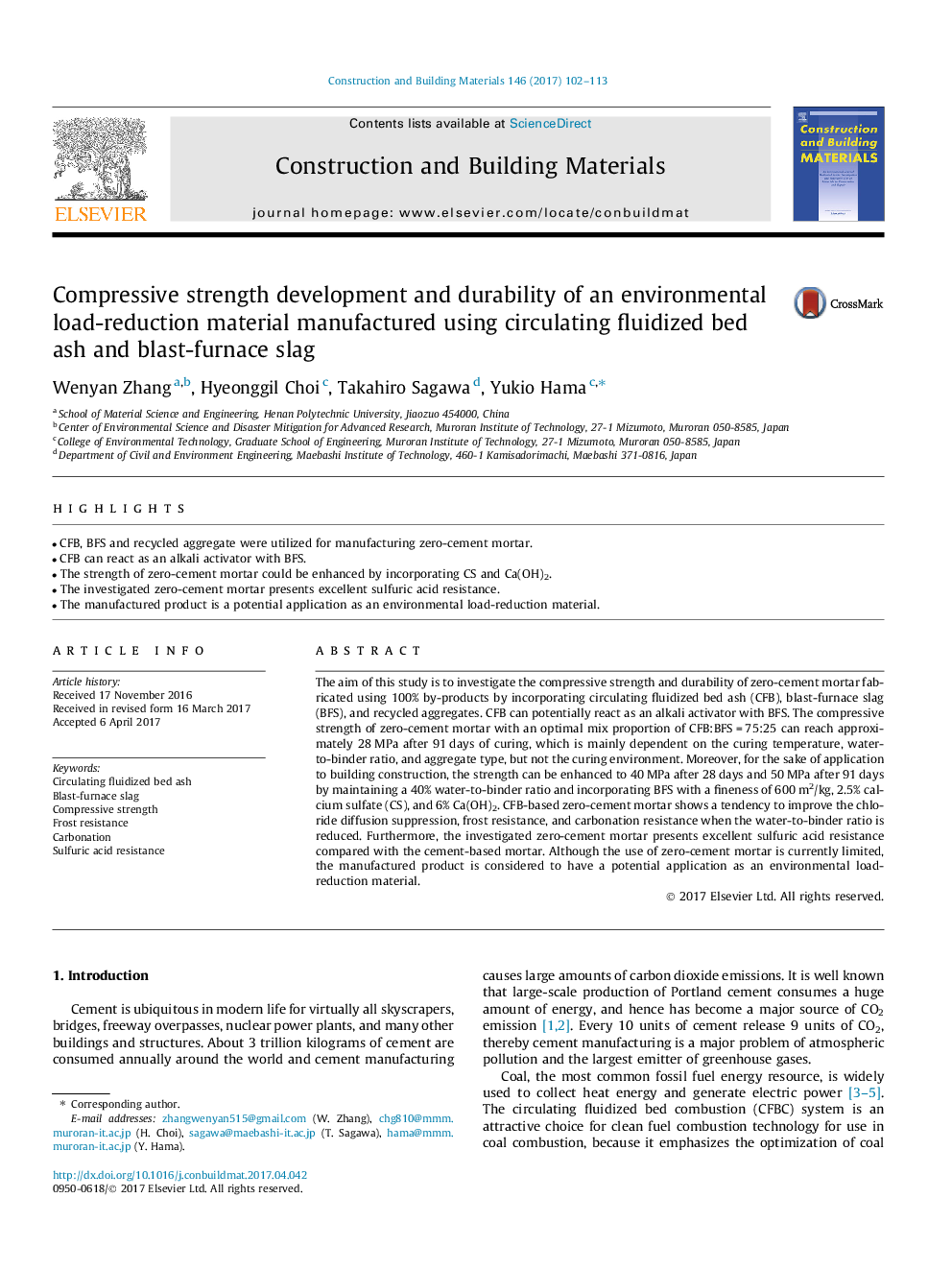| Article ID | Journal | Published Year | Pages | File Type |
|---|---|---|---|---|
| 4913284 | Construction and Building Materials | 2017 | 12 Pages |
Abstract
The aim of this study is to investigate the compressive strength and durability of zero-cement mortar fabricated using 100% by-products by incorporating circulating fluidized bed ash (CFB), blast-furnace slag (BFS), and recycled aggregates. CFB can potentially react as an alkali activator with BFS. The compressive strength of zero-cement mortar with an optimal mix proportion of CFB:BFSÂ =Â 75:25 can reach approximately 28Â MPa after 91Â days of curing, which is mainly dependent on the curing temperature, water-to-binder ratio, and aggregate type, but not the curing environment. Moreover, for the sake of application to building construction, the strength can be enhanced to 40Â MPa after 28Â days and 50Â MPa after 91Â days by maintaining a 40% water-to-binder ratio and incorporating BFS with a fineness of 600Â m2/kg, 2.5% calcium sulfate (CS), and 6% Ca(OH)2. CFB-based zero-cement mortar shows a tendency to improve the chloride diffusion suppression, frost resistance, and carbonation resistance when the water-to-binder ratio is reduced. Furthermore, the investigated zero-cement mortar presents excellent sulfuric acid resistance compared with the cement-based mortar. Although the use of zero-cement mortar is currently limited, the manufactured product is considered to have a potential application as an environmental load-reduction material.
Related Topics
Physical Sciences and Engineering
Engineering
Civil and Structural Engineering
Authors
Wenyan Zhang, Hyeonggil Choi, Takahiro Sagawa, Yukio Hama,
